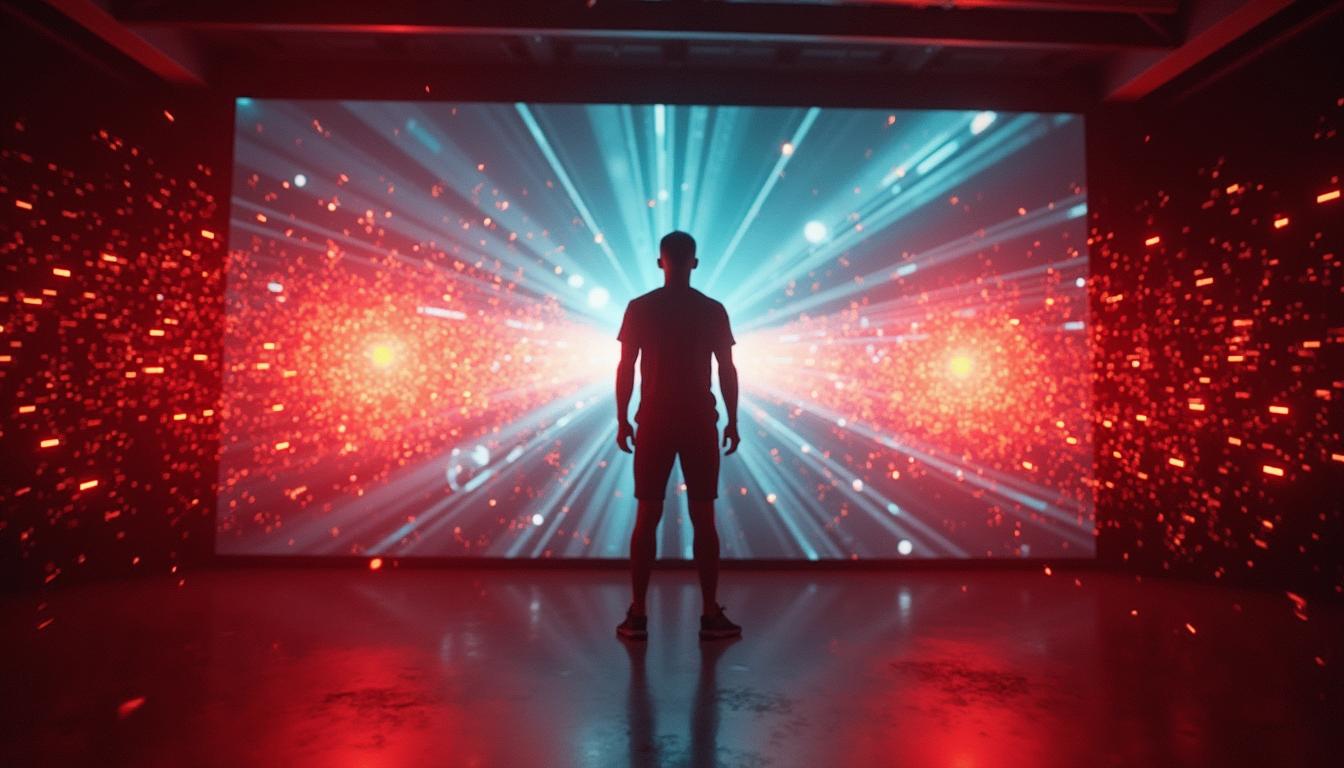Welcome to the Research and Strategy Services at in today's fast-paced.


Psychophysics is a neuroscience domain devoted to understanding how the human brain processes its sensory reality. And when it comes to how we perceive our own body, the science is very surprising. A classic experimental example is the infamous ‘rubber hand illusion’ (AKA body transfer illusion). The mind-bending power of this is demonstrated in the video below. Here we will cover modern augmentations of this experiment which reveal that when it comes to perceiving our ownership of our own body, nothing is what it seems.
This video provides a great demonstration of just how powerful the rubber hand illusion is. First devised and studied by researchers Botvinick and Cohen in 1998, the experiment showed that the brain can perceive a clearly fake hand, to vividly feel like a person’s own real hand.
It simply involves evoking tactile sensations on a real hand (out of sight), synchronized with seeing what would cause matching sensations on a rubber hand. It’s works consistently well, and can be setup relatively easily as a DIY experiment.
A much simpler, but still relatable thought experiment of this effect, is to imagine the experience of writing on a notepad with a pen. Even though your fingers only sense the hard plastic or metal of the pen, we viscerally feel the softness and texture of the paper as if we are touching it directly. Hitting a ball with a bat or racket is another example.
As the effect is deeply counterintuitive, it’s best to first coverthe fundamentals of how the brain perceives reality. The human brain is not a sensory organ, and does not perceive anything directly. In fact, brain surgery is sometimes comfortably conducted without an anesthetic or pain killers, so that the patient can guide the surgeon if they lose some specific functions such as movement.

Instead, the central nervous system relays what is effectively binary data to the brain in the same way computers process information – as streams of 1s and 0s (neurons firing or not firing). These are received by the brain as electrical signals, and depending on their specific pattern (think Morse code), they are processed by different brain regions specialized in decoding them.
In this way Neo's existence in the Matrix is actually a good metaphor for how the brain actually senses the world around us. However, the amount of 1s and 0s delivered by all our sensory systems is truly vast. Even though our brains can process at a speed closely equivalent to the world’s fastest supercomputer today, there is still far more information than what can actually be processed.

For this reason the brain using very clever perceptual-shortcuts, extrapolating certain patterns of information to make surprisingly accurate estimations and predictions.
Vision is a key example of this. We only see precise detail in the central 1-2 degrees of our field of view processed by foveal vision, which acts like a kind of tiny spotlight. Outside of this most of our vision is blurred.
To compensate, our visual focus darts around rapidly scanning pertinent key points of scenes, such as moving objects, bright colors, or areas of interest such as human faces. The brain finds collective information patterns in these very brief snapshots, combines them with predicting modelling (what’s expected), and builds a virtual impression of our environments.
This constitutes our visual conscious perception, which, albeit usually very accurate, is mostly very clever guesswork. All our sensory perceptions work along the same lines, a system referred to as the ‘internal model’, because mostly our reality is simulated within the brain. This is done by extrapolating sensory information patterns, refined by continuous feedback from testing predictions throughout our lives, with neuroplastic adaptations (rewiring the brain).
Illusions occur when those predictions do not match the sensory information patterns which are fed back. Which is why they are used by neuroscientists to tease out and study the incredibly impressive tricks and perceptual shortcuts that our brains are so naturally adept at - not to show us how gullible we are!
This is why the rubber hand illusion is of great interest to neuroscientists – for the brain, our own body is also part of the external sensory environment. For this reason the brain can replace it when sensory patterns from other sources line up with our internal model's predictions.
The video above went one step beyond the original experiment, by demonstrating that once primed, tactile stimulation isn’t even needed to produce sensations in the fake hand that still feel very much like a real part of the body.
Since 1998 there have been many variations on the classic experiment in order to probe the boundaries of how flexible our brain is in abandoning our physical sense of self, and replacing it with things that bear very little resemblance. One example is that the rubber hand can be replaced with a gooey one, then stretched several feet, and actually feel like a person’s real hand is impossibly stretched.
A study just published by Chinese researchers has confirmed that we are susceptible to the illusion just by imagining what a moving robotic hand feels like. This changed where study participants thought their real hand was, even though electromyography data showed no muscle activation. Questionnaire assessments showed participants felt ownership of the robot hand, and experienced agency in over it’s motion, as if they were controlling it.
This research may have implications for the use of visualization techniques used by sports psychologists and professional athletes to prime themselves for competition performance, because in this case, visualizing is actually believing.
Other research has also established the relevance of transferred body ownership to robotic or virtual arms to help surgeons adapt effectively the latest surgery technologies, and for performing remote surgeries.
In recent years research into the illusions of body ownership has been accelerating due to its direct relevance for virtual reality experiences. Immersion in VR is intimately connected to how well our senses are integrated within virtual environment experiences.

One example is a study by Swedish psychophysicists creatively titled ‘If I Were You: Perceptual Illusion of Body Swapping’. Taking things to the next level they conducted VR experiments demonstrating that, even with minimal sensory cues, our minds can take over ownership of different body.
Using VR they manipulated study participant’s visual perspective to be from a another person, or a fake body. This was done in sync with correlated multisensory cues. The experiment was sufficient to trigger the illusion that another person's body, or an artificial body, was the participants’ own real body.
In the researchers' own words, ''𝗧𝗵𝗶𝘀 𝗲𝗳𝗳𝗲𝗰𝘁 𝘄𝗮𝘀 𝘀𝗼 𝘀𝘁𝗿𝗼𝗻𝗴 𝘁𝗵𝗮𝘁 𝗽𝗲𝗼𝗽𝗹𝗲 𝗰𝗼𝘂𝗹𝗱 𝗲𝘅𝗽𝗲𝗿𝗶𝗲𝗻𝗰𝗲 𝗯𝗲𝗶𝗻𝗴 𝗶𝗻 𝗮𝗻𝗼𝘁𝗵𝗲𝗿 𝗽𝗲𝗿𝘀𝗼𝗻'𝘀 𝗯𝗼𝗱𝘆 𝘄𝗵𝗲𝗻 𝗳𝗮𝗰𝗶𝗻𝗴 𝘁𝗵𝗲𝗶𝗿 𝗼𝘄𝗻 𝗯𝗼𝗱𝘆 𝗮𝗻𝗱 𝘀𝗵𝗮𝗸𝗶𝗻𝗴 𝗵𝗮𝗻𝗱𝘀 𝘄𝗶𝘁𝗵 𝗶𝘁. 𝗢𝘂𝗿 𝗿𝗲𝘀𝘂𝗹𝘁𝘀 𝗮𝗿𝗲 𝗼𝗳 𝗳𝘂𝗻𝗱𝗮𝗺𝗲𝗻𝘁𝗮𝗹 𝗶𝗺𝗽𝗼𝗿𝘁𝗮𝗻𝗰𝗲 𝗯𝗲𝗰𝗮𝘂𝘀𝗲 𝘁𝗵𝗲𝘆 𝗶𝗱𝗲𝗻𝘁𝗶𝗳𝘆 𝘁𝗵𝗲 𝗽𝗲𝗿𝗰𝗲𝗽𝘁𝘂𝗮𝗹 𝗽𝗿𝗼𝗰𝗲𝘀𝘀𝗲𝘀 𝘁𝗵𝗮𝘁 𝗽𝗿𝗼𝗱𝘂𝗰𝗲 𝘁𝗵𝗲 𝗳𝗲𝗲𝗹𝗶𝗻𝗴 𝗼𝗳 𝗼𝘄𝗻𝗲𝗿𝘀𝗵𝗶𝗽 𝗼𝗳 𝗼𝗻𝗲'𝘀 𝗯𝗼𝗱𝘆.''
These effects were confirmed through both structured subjective reports and detailed biometric analysis.
With the rise in adoption of VR/AR/XR/MR and the promise of the metaverse, understanding the perceptual boundaries of the physical self could have transformative impacts on how humanity defines itself. As neuroscience now shows, our brains are powerful enough to experience other people’s bodies as our own. The possibilities are endless.






Welcome to the Research and Strategy Services at in today's fast-paced.

Check out these excellent insights on the role of neuroscience in sports performance.

Learn about your brain's remarkable neuroplasticity.

Check out neuroscience-based do’s and don’ts for successful New Year’s resolutions.
.png)